
LOCATION CONSULTING DESIGN & ENGINEERING DESIGN-BUILD CONSTRUCTION & CONTRACTING DECEMBER 2022 VOLUME 16 ISSUE 12
Y
Austin
Time
through10/2022.
SAFETY NET IT’S ALWAYS SAFETY FIRST. CONSULT • DESIGN • ENGINEER • CONSTRUCT
National Safety Council
SAFE T
FIRST.
employees have worked 5,221,485 hours without a Lost
Accident
From late November to mid-January, when families gather, parties are scheduled and travel spikes, safety should be top of mind. Following is tried-and-true advice to ensure your family remains safe and injury-free throughout the season. THE
Enjoy a Safe Holiday Season
STAY UP TO DATE WITH COVID-19 VACCINES
Anyone who has symptoms of illness should stay home. When gathering with people from multiple households, consider taking a COVID-19 test prior to the event to further reduce risk.
The National Safety Council and its partners provide additional vaccine information here.
HOLIDAY TRAVEL? BE PREPARED
If you’re traveling this year, be sure your vehicle is in good running condition, get plenty of rest and be prepared for any emergency. Traveling by car during the holidays has the highest fatality rate of any major form of transportation based on fatalities per passenger mile. Hundreds of people die every year in crashes on New Year’s Day , Thanksgiving Day and Christmas Day , according to Injury Facts . Alcohol impairment is involved in about a third of these fatalities. Stay safe on the roads over the holidays — and every day:
• Prepare your car for winter and keep an emergency kit with you

• Get a good night’s sleep before departing and avoid drowsy driving
• Leave early, planning ahead for heavy traffic
• Make sure every person in the vehicle is properly buckled up no matter how long or short the distance traveled
• Put that cell phone away; many distractions occur while driving , but cell phones are the main culprit
• Practice defensive driving
• Designate a sober driver to ensure guests make it home safely after a holiday party; or over-the-counter, prescription and illegal drugs can cause impairment
DECORATE SAFELY
Decorating is one of the best ways to get in a holiday mood, but emergency rooms see thousands of injuries involving holiday decorating every season. When decorating follow these tips from the U.S. Consumer Product Safety Commission :
• Keep potentially poisonous plants – mistletoe, holly berries, Jerusalem cherry and amaryllis – away from children
• If using an artificial tree, check that it is labeled “fire resistant”
• If using a live tree, cut off about 2 inches of the trunk to expose fresh wood for better water absorption, remember to water it and remove it from your home when it is dry
• Place your tree at least 3 feet away from fireplaces, radiators and other heat sources, making certain not to block doorways

• Avoid placing breakable ornaments or ones with small, detachable parts on lower tree branches where small children can reach them
• Only use indoor lights indoors and outdoor lights outdoors, and choose the right ladder for the task when hanging lights
• Replace light sets that have broken or cracked sockets, frayed or bare wires, or loose connections
• Follow the package directions on the number of light sets that can be plugged into one socket
• Never nail, tack or stress wiring when hanging lights and keep plugs off the ground away from puddles and snow
• Turn off all lights and decorations when you go to bed or leave the house
WATCH OUT FOR FIRE-STARTERS CANDLES AND FIREPLACES
Use of candles and fireplaces, combined with an increase in the amount of combustible, seasonal decorations in many homes during the holidays, means more risk for fire. The National Fire Protection Association reports that onethird of home decoration fires are started by candles and that two of every five decoration fires happen because the decorations are placed too close to a heat source.
• Place candles where they cannot be knocked down or blown over and out of reach of children
• Keep matches and lighters up high and out of reach of children in a locked cabinet
• Use flameless, rather than lighted, candles near flammable objects

• Don’t burn trees, wreaths or wrapping paper in the fireplace
• Use a screen on the fireplace at all times when a fire is burning
• Never leave candles or fireplaces burning unattended or when you are asleep
• Check and clean the chimney and fireplace area at least once a year
3
...continued on next page ...continued on next page
TURKEY FRYERS
Be alert to the dangers if you’re thinking of celebrating the holidays by frying a turkey. The Consumer Product Safety Commission reports there have been hundreds turkey-fryer related fires, burns or other injuries, and millions of dollars in property damage losses from these incidents.

NSC discourages the use of turkey fryers at home and urges those who prefer fried turkey to seek out professional establishments or consider using an oil-less turkey fryer. If you must fry your own turkey, follow all U.S. Fire Administration turkey fryer guidelines .
FOOD POISONING IS NO JOKE
Keep your holidays happy by handling food safely. The foodsafety.gov website from the U.S. Department of Health and Human Services provides some valuable holiday food safety tip s:
• Wash your hands frequently when handling food
• Keep raw meat away from fresh produce

• Use separate cutting boards, plate and utensils for uncooked and cooked meats to avoid cross-contamination
• Use a food thermometer to make sure meat is cooked to a safe temperature
• Refrigerate hot or cold leftover food within two hours of being served
• When storing turkey, cut the leftovers in small pieces so they will chill quickly
• Thanksgiving leftovers are safe for three to four days when properly refrigerated
Watch this holiday food safety video for more information.
IT’S BETTER TO GIVE SAFELY
Gifts and toys should inspire joy, not cause injuries. Thousands of children are seriously injured in toy-related incidents every year. Avoid safety hazards while gifting with these tips from the U.S. Consumer Product Safety Commission:
• Toys are age-rated for safety, not for children’s intellect and physical ability, so be sure to choose toys in the correct age range
• Choose toys for children under 3 that do not have small parts which could be choking hazards
• For children under 10, avoid toys that must be plugged into an electrical outlet
• Be cautious about toys that have button batteries or magnets , which can be harmful or fatal if swallowed
• When giving scooters and other riding toys, give the gift of appropriate safety gear, too; helmets should be worn at all times and they should be sized to fit
To find out about holiday toy safety and recalls, check the U.S. Consumer Product Safety Commission website.
QA and Safety Wheel Training
Training was provided at Project Choco (Ferrero) and Project Candlelight (Kensing Solutions) on October 26 regarding our QA/QC Manual and the safety “Energy Wheel”. In our QA training we discussed the inspection Plan, First In Place, and In Process inspections completed in Procore. It was explained how, when and how often these inspections should be completed. We discussed material receipt inspection shall be completed by the company that purchased the material and spot check by the project Austin team. Any nonconforming conditions should be documents and corrected immediately.
In our safety training we discussed the “Energy Wheel” and how it shall be incorporated into our daily safety talk (JSA/Daily Huddle) prior to starting work each day.




Safety Summit in Bolder, Colorado
They discussed four (4) main topics.
• Safety in Environmental, Social, and Government (ESG) –Putting our Metrics where our mouth is
• MSCI / ESG – Ratings aim to measure a company’s management of financially relevant ESG risks and opportunities. ESG
• What is different about SIF’s (Serious Injuries and Fatalities)
• If you can predict it, you can prevent it (Based on SIF Conditions)
• Incident learning (Avoiding the pitfalls of bias and blame)
One of the key takeaways that we will be presenting to all regions and projects is the Serious Injuries and Fatalities (SIF) section. We call it the “Energy Sources”. The University of Colorado Boulder has scientific evidence on how a company could reduce their current accident rate by 30% by incorporating the energy wheel into their current safety program.
Austin will be revising their safety manual and provide training the first quarter of 2023.
Project Choco (Ferrero) Left to right – Tremaine Thompson, Daniel Scullion, Leon Walker, Jason Middleton and Corey Geter Tom Morris not present
Charlie Engel (Left) and Charles (Chas) Hammon P.E. attended the University of Colorado Boulder “Construction Safety Research Summit” in Denver on November 2.
Project Candlelight (Kensing Solutions) Left to right – John Helton, Ervin McCarrol and Tony Goodeaux
Building Industrial Safety into the Design of New Construction
08.31.2022
| Grainger Editorial Staff
New industrial design and construction typically focuses on specific elements from reduction of manufacturing costs to the ability to maintain competitiveness within the marketplace. While these core elements can be applied to virtually any industry or manufacturer, there’s another element that shouldn’t be overlooked: industrial safety.
SAFETY STARTS BEFORE CONSTRUCTION BEGINS
Decisions made by designers, engineers and architects during the industrial design process can have a direct effect on the inherent safety of future operations.
According to the American Society of Safety Professionals (ASSP) , Occupational Safety and Health (OSH) experts have recognized that safe design is one of the best ways to prevent and reduce occupational injuries.
Mike Carroll, CSP, a Grainger Safety Consultant in the West Coast Region, said that this investment is really a matter of perspective.
“You’re throwing money into safety either way,” he said. “Do you want to do it up front or do you want to do it forever? That’s what we’re talking about.”
Investing the time and effort to conduct a thorough prestartup safety inspection can minimize the need for safety retrofits down the road. Carroll referenced one specific project to illustrate the point.

“They’re building data centers all over the country and their standard parapet wall is 24 inches,” he said. “They’re building them today, knowing that employees are going to go up there for air conditioning and ducts. Now we’re working on installing guardrail systems to ensure that they have what they need to follow the standard and keep people from falling on the roof. It would have been a lot easier for the engineers to say, ‘Build those parapet walls based on the width of the parapet.’”
It’s not as if the issue is being ignored. In the U.S., the voluntary national consensus standard, ANSI/ASSE Z590.32011 (R2016), incorporates key elements for implementing Prevention through Design (PTD). The design industry has taken this a step further in creating Design for Construction Safety (DfCS) guidelines which are a PTD subspecialty. A similar concept is expressed in different terms globally. In the U.K., researchers at Glasgow Caledonian University worked with the Institute of Occupational Safety and
Health to improve awareness of how design influences occupational safety and health management. Australia’s Work Health and Safety Act identifies and outlines duties that apply to safe design. The Netherlands, as well as academia, has recognized need through the Safety-byDesign (SbD) concept, a cross-disciplinary approach that promotes an emphasis on identifying anticipated risks in innovation and technology that align with societal needs and public values. While SbD’s overarching goal is worker safety, and it encompasses design within broader goals.
SAFETY RETROFITS CAN CAUSE CHALLENGES, COSTS
Companies with existing facilities are finding that safety shortfalls can be problematic, and in hindsight, could have possibly been avoided through better communication.
“I have a couple of organizations right now going through some capital process upgrades,” said Kenneth Baas, CSP, Grainger Safety Consultant for the Southeast Region. “And I’m hearing from their safety managers that they didn’t do a good job on the front end to design safety in. So now they’re scrambling and coming up with all these challenges that they’re facing because of engineering that took place outside of their four walls. Maybe they’re in silos and not communicating well with the site prior to the project execution?”
In effect, the communication that needed to happen prior to the project start is happening after the fact, when the cost to retrofit can be more than if it was completed as part of the initial design and construction project.
“So again, they’re going to have to go in through and engineer or change an exorbitant amount of cost, post installation, as opposed to doing it on the front end,” he said. “I don’t know what the ratio of that is – if it’s 70/30, with 70 percent being they’re not doing a good job communicating on the front end of a project versus 30 percent, that’s not where it needs to be for sure.”
THE SAFETY RESPONSIBILITY
One of the biggest challenges in addressing this issue is who ultimately owns, or even shares, responsibility. The American Council of Engineering Companies (ACEC) has taken the position that “occupational safety risk should be borne by the owner – the party best able to control the risk – so long as the design professional performs in accordance with the standard of care and applicable codes.”
ACEC noted that designers who follow DfCS guidelines could reallocate safety risk, even when standard contracts are used. These contracts are used by “pure design”
firms rather than those who provide design services as part of a construction contract, such as design-build and Engineering, Procurement, Construction (EPC) firms.
Pure design firms traditionally and contractually disclaim safety risk, allocating it fully it to the construction contractor. Research confirms that there’s a simple reason for this. According to the American Society of Civil Engineers (ASCE), while hundreds of colleges and universities offer engineering and design degrees, few include safety topics as part of the required curriculum. In fact, many of these programs are under pressure to cut the existing required curriculum hours and are not looking to add additional safety coursework because there is simply no room for it. This means that many designers and engineers lack the training and awareness to adequately address safety in their design approach.
Finally, if safety concerns are added to the designer’s process, this could result in greater design and construction expenses, increasing the total cost of the construction project, or a project that does not ultimately align with the client’s needs, budget, or goals.
THE CASE FOR SAFETY BY DESIGN
Carroll said that fundamentally, the case for improved safety in new construction needs to be built around resources. “So, how do you get the resources?” he asked. “You build yourself a good business case. You start talking about ROI, you start figuring out how long it takes you to erect a scaffold or to have an employee grab that ladder, erect that ladder, figure it out and tie it off.”
He then said that the case moves into the cost of prevention.
“And then you start coming into the more gray area of, well, what are we hoping to prevent? And what’s the cost of that?” he asked.
Because incidents and those related costs are all projections and what-ifs, Carroll said it can be difficult to obtain the necessary buy-in and budget from facility managers. But ASSP outlines a range of ways to identify that return on a safety investment beyond raw dollars, such as improved employee satisfaction, better operational efficiency and a public relations boost.
Building permanent industrial safety features into new and retrofit construction, following a thorough safety design review and utilizing PTD principles, may help prevent occupational injuries and fatalities while realizing these related benefits.
7
Safety Leadership Conference 2022: EHS in the Electric Vehicle World
10.20.2022 | EHS Today, Jill Husko
Safety and sustainability are major considerations within the growing electric vehicle industry.

Lots of excitement and lots of challenges in the fast-moving electric vehicle industry and both descriptions quickly work their way into the conversation. Such was the case this week at the Safety Leadership Conference in Cleveland, which featured a keynote panel discussion on the future of electric vehicles and EHS considerations. The keynote was a joint presentation with IndustryWeek’s Manufacturing & Technology Show.
Panelists from Cirba Solutions, Eaton, Lincoln Electric and Ultium Cells discussed their participation in the EV industry and tackled topics ranging from talent development, safety and sustainability to how quickly the electric vehicle market will develop.
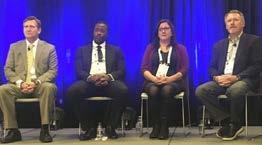
Here are highlights from the wide-ranging discussion:
SAFETY AS A TOP PRIORITY
You’ve likely heard of Ultium Cells if you follow progress in the EV industry to any degree. Ultium Cells is a joint venture between General Motors and LG Energy Solution to manufacture battery cells, and its site near Youngstown, Ohio, is the first of three in the works. The Ohio facility, which represents a $2.3 billion investment, is the only one producing product currently and it’s so new that only about 20% of its equipment is installed.
Ultium Cells panelist Kareem Maine is nearly as new—at least to the Ultium plant. Maine is plant director at the Ohio site, having moved over from a General Motors stamping plant in August. Among the goals of the joint venture is to blend the cultures of GM and LG “and create one Ultium culture,” he says.
Maine discussed the transition from working in vehicle propulsion and metal stamping environments to Ultium, where chemical manufacturing processes are prevalent. What is similar between the manufacturing types is the focus on safety as a top priority, he said, although what constitutes the top safety issue is unique to every plant. “We’re in a plant that has chemicals now, so we’re trying to benchmark the best of the best to see what practices we can bring inside the building,” he says.
(Caption, left to right: Scott Adams, Eaton; Kareem Maine, Ultium Cells; Heather Soerries, Cirba Solutions; Steven Sumner, Lincoln Electric)
THE PUSH INTO THE ELECTRIC VEHICLE
SPACE
You might think of the EV industry as the birthplace of startups, but manufacturers Eaton and Lincoln Electric, both of which are more than 100 years old, are significant players. Eaton formed its eMobility division in 2018, although the manufacturer had been participating a bit in the electric space before then. “But it was kind of haphazard,” explained Scott Adams, president of the eMobility division. The market had seen “fits and spurts of electrification” in vehicles over many years, only for those opportunities to dry up, Adams said.

More recently, however, the drivers of electrification seemed more “real,” Adams said. Those drivers now included CO2 emissions as well as fuel economy, coupled with China’s push to develop new energy vehicles.
“It took us about a year to convince our senior leadership because of the history,” he said.
Like Eaton, Lincoln Electric already played a role in the EV industry, but the welding company was always on the lookout for opportunities to grow. “If you think about our company as a power conversion company, it happens to be a welder today, but it could be anything,” said Steven Sumner, vice president, Global Equipment, at Lincoln Electric. “So we said, ‘Let’s build an EV charging business.”
ON CHALLENGES
One big challenge to the EV industry is the shortage of lithium, pointed out Heather Soerries, QEHS specialist at
Cirba Solutions. “We don’t have the lithium available right now to meet the need into 2030.”
Cirba Solutions dismantles and recycles EV batteries, doing its part to keep them out of landfills. “Sustainability is a major part of our company.”
In addition to recycling, the EV panelists raised the topics of reusing and repurposing EV batteries. Eaton’s Adams said his company has worked with Nissan to repurpose batteries for uninterruptible power supply systems, and he pointed to a sports arena project in Amsterdam. It used a blend of new batteries and repurposed batteries. Additionally, Sumner referenced a discussion by the Center for Automotive Research in which the energy in used EV batteries could be harnessed and returned to the grid, perhaps to assist during peak demand.
Sumner is very clear on where several challenges for the industry lie. On the charging side of the equation, it’s interoperability. “Thirty percent of all charging events today fail, because the car and the charger won’t talk to each other, despite the fact that there is an industry standard.” It’s a bigger problem than most people realize, he believes. He also pointed to the $5 billion allocated by the Infrastructure Investment and Jobs Act to build a nationwide network of EV charging stations over five years. Sumner outlined a scenario that would place charging stations approximately every 50 miles along this alternative fuel corridor.
9
Ergonomic Considerations for Hybrid Workers
10.24.2022 |EHS Today - Anand S. Iyer, Brandy F. Miller, Jeffery E. Fernandez
The workplace is changing. Here’s what you need to know to keep workers safe, comfortable and in proper alignment when they come to the office.
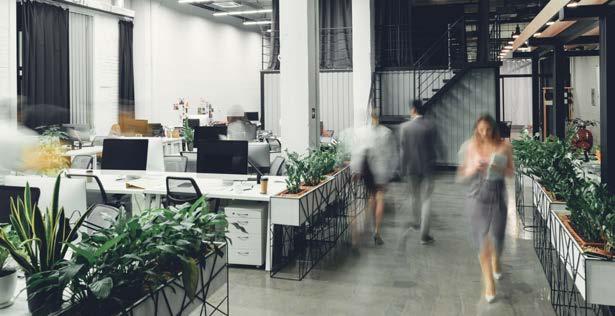
COVID-19 has significantly disrupted office work. The implementation of telework has allowed employees to remain productive while mitigating risks related to COVID-19. The widespread usage of telework has provided a way for workers to be effective and efficient whether at the office, home or any other remote location.
Even as new variants of the virus emerge and the community risk changes, employers are welcoming employees back to the office. During the pandemic, workplaces have reacted swiftly and with great conviction to change the culture of work to suit the needs. However, frequent lockdowns and waves of infections have changed the nature of work along with how companies react.
Companies have realized that not all employees have to be present at the same office location at the same time to conduct business operations. Rather, teams could get most work tasks efficiently completed from a remote location. Some companies have gone from working entirely in the office to at-work pre-pandemic to 100% home-based operations with little or no effect on their business operations.
As companies continue to make changes to their business model and prepare for the future, they need to consider which culture changes to continue and which will return to the pre-pandemic model. Because of the success of telework, many organizations, including Apple and Google are providing employees an option to return to the office with a hybrid schedule.
To accommodate hybrid work, safety and facilities personnel are assessing a new set of scenarios related to having fewer employees on-site at any given time. This allows for the possibility of using less real estate so that employees who are needed on-site at any given time are provide the required office space along with employees who are still inclined to work from the office. To that extent, many businesses have already reduced their footprint by liquidating excess office space.
The challenge of this new arrangement is determining how best to optimize productivity for both the physical and telework workspace while making sure employees are operating in a comfortable setting.
Ergonomics is the science that fits the task to the worker. Too often, employees perform tasks in hazardous postures or environments that may cause them injury, either immediately or over time. The main work-related health
problems affecting office employees are pain, discomfort, stress, visual fatigue and even injury. These can be the result of sedentary work, highly repetitive tasks and working in awkward positions due to an incorrect workstation set up.
Improving ergonomics at the workplace can address many of these issues while positively impacting your bottomline. Effective ergonomics benefits both employers and employees through improved health and safety, higher productivity and lower costs.
If your organization is moving toward a hybrid work model, here are three questions to consider.
WHERE CAN TASKS BE MOST EFFECTIVELY COMPLETED?
With a hybrid model, managers should consider which tasks should be performed in each location (on-site versus telework). Understanding each environment and their unique characteristics can help improve the efficiency of each location.
In the telework environment, employees can focus on tasks that require minimal interaction. Work that is solitary or work with people at different locations may lend itself to being completed primarily during telework times. Solitary work can also be performed on-site as needed but does not take advantage of the opportunity to work with others that is inherent to the office.
Conversely, on-site work allows for collaboration, planning and face-to-face interaction. Therefore, tasks that require collaboration may be most appropriately scheduled on days when the key employees are in the office.
When hybrid schedules are slightly flexible, employees can coordinate their on-site days so that they can schedule their work together. It should be noted that some tasks, such as internal or external customer facing tasks, may require some employees to be on-site every day.
HOW CAN WE OPTIMIZE SPACE WITH ON-SITE WORKSTATIONS?
Understanding the primary tasks performed during onsite time is critical to make the best use of office space. Planners, ergonomists and safety professionals should use this information to ensure that employees can perform work tasks safely and efficiently.
The hybrid workplace requires that both the telework location and the on-site work location accommodate the employee’s needs. Our previous discussion reviewed ways to arrange the telework location so as to follow proper ergonomic principles.
When setting up any workspace, the goal of ergonomics should be kept in mind: to fit the tasks performed to the capabilities of the human. One way this can be done is to adhere to the design acronym N-E-W (neutral posture –elbow/eye height – work area) to guide workstation setup.
When employees work a reduced number of days on-site, it may allow for more efficient use of space through shared workstations. There are a number of ways that organizations address this shared workplace assignment, including:
• assign the shared desk locations to individuals based on need,
• make them available for reservation based on workstation characteristics or
• have them be on a first come, first served basis.
HOW CAN EMPLOYEES AND MANAGERS BE ERGONOMICALLY AWARE OF WHERE THEY WORK?
No matter which method is used, it is important to ensure the workstations accommodate the range of employees who could use them. This can be done by either ensuring the workstations include adjustability or through an A-B-C type approach.
BUILT-IN WORKSTATION ADJUSTABILITY
Fully adjustable workstations have built-in adjustability to accommodate the majority of employees who may use a workstation. This may include:
• dual monitors with arms that can be adjusted for optimal height and viewing distance;
• a workstation that can adjust from seated postures to standing postures; and
• a chair that allows for key adjustments, such as seat pan depth, lumbar support, seat height, armrest width and seat pan height.
Furthermore, each workstation should have ergonomic friendly peripherals that includes but is not limited to:
• a docking station that is compatible with employerprovided technology,
• power outlets that are available on the top of the workstation (to eliminate the need for people to plug in items under the workstation regularly), and
• an external keyboard and mouse. Organizations can reuse existing furniture for these workstations, but they must incorporate as much adjustability as possible so that employees can arrive at the
11
...continued on next page
workstation, make the necessary modifications and begin working.
Along with any built-in adjustability, employees should be trained on the proper adjustment and alignment of the equipment Employees should work with their monitors positioned where their neck is neutral (straight), their keyboard and mouse are positioned close (primary work area) and at elbow height, and their feet are on the floor or a footrest.
For employees who need additional accommodations, it is the company’s responsibility to provide the necessary workstation modifications so that employees are in line with the N-E-W principle. For example, the company may need to purchase additional chair models for employees of a certain height and/or weight who are not served by a standard chair.
A-B-C WORKSPACES
When built-in workstation adjustability cannot accommodate the range of employees who need to use a workstation, employers should develop an A-B-C approach. This approach divides the available workstations into sets that are adjusted to fit employees of all sizes.
Employees are measured and then instructed to use those select workstations that match their measurements. In practice, this means that a single work area would include workstations of each of predetermined size to accommodate all workers. For this concept to be successful, two activities should be conducted:
1. A map of the entire work area needs to be cataloged with the dimensions, features, and adjustability for the workstations, seats, and peripherals.

2. Employees must have pertinent anthropometric measurements (e.g., sitting/standing elbow height for worksurface height, popliteal height, etc.) taken so they can be categorized and educated as to which workstation cluster is most appropriate for them.
One organization implemented such a strategy and arranged desks so that the work surfaces were 25 inches, 27 inches and 29 inches (see Figure 1 for a sample layout). The seated elbow height for all employees within the organization was then measured, and they were coached as to which workstation height group would be most appropriate for their use.
Figure 1. Sample Spatial Arrangement of Workspace by A-B-C Categories. IT considerations for external monitors, keyboard/mouse, docking stations, and power on the desktop should also be included at each workstation. Additionally, the implementation of footrests may be needed for individuals whose feet do not reach the ground to allow them to work in a neutral ergonomic position at some workstations. As with the adjustable workstations, additional considerations are needed to ensure that individuals who do not fit into those sets are provided appropriate ergonomic workstation modifications.
ACKNOWLEDGE AN ENVIRONMENT OF CHANGE
As organizations navigate the return to the office, it is important to remember that the way each employee works is changing significantly.
For some, teleworking has introduced flexibility and additional short work breaks into their schedules, so returning to the office may mean being tied their desks for a longer duration. For others, teleworking has required them to be tied to their workstations for almost continuous virtual meetings, so returning to the office may provide additional breaks as they move between conference rooms or inperson meetings.
As employees adjust to a hybrid schedule, it is important to ensure that everyone follows proper ergonomic principles. Furthermore, companies need to guarantee that as part of the return-to-work process, necessary workplace modifications are available and provided to individuals with special needs. These accommodations must remain compliant with all the federal and state regulations. It is important for individuals who have a history of related injuries, such as musculoskeletal disorders and other disorders, to seek the assistance of a certified professional ergonomist (CPE).
With careful planning, consideration and training, employees can continue to work productively and safely in a hybrid work environment.
New Mental Health Guidelines an Imperfect but Encouraging Step
11.03.2022 |EHS Today - Kate Field
These new WHO and ILO guidelines would enable a safe space for employees while simultaneously destigmatizing mental illness in the workplace.
Over the past couple of years, mental health has come to the forefront as the ripple effects of the pandemic shone a staggering light on the different challenges people were facing. According to a studyby the National Institute of Mental Health, nearly one in five U.S. adults suffered from mental illness in 2019, and the numbers increased when the pandemic hit in 2020, abruptly pushing many into a long period of isolation, unemployment, and illness. As the world is trying to reconstruct and reshape the life it once knew before the pandemic, conversations around mental health are taking place with renewed importance inside homes, schools, and the workplace.
The World Health Organization (WHO) and the International Labour Organization (ILO) recently published their first-ever global guidelines on mental health and work, which aim to inform businesses about ensuring safe and supportive working conditions that promote mental health. These guidelines are a much-needed contribution to the workplace environment, particularly for Occupational Health and Safety (OH&S) professionals.
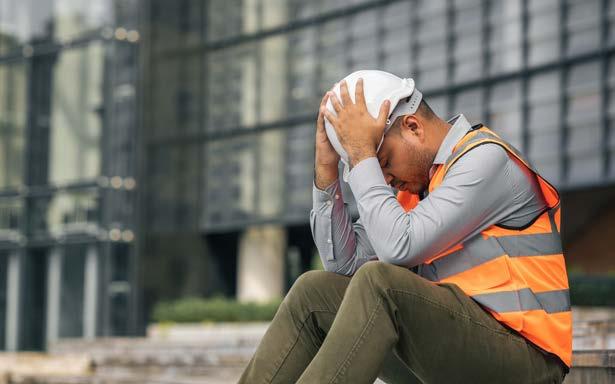
BENEFITS OF THE WHO AND ILO GUIDELINES IN THE WORKPLACE
The OH&S field’s focus has always been the safety, health, and welfare of people at work; however, concerns around mental health have traditionally been brushed to the side in favor of more tangible physical safety. According to the United States Department of Labor Occupational Safety and Health Administration’s standard under 1904.5(b)(2), employees can bring concerns about mental illness to their managers; however, employees cannot prove their concerns are work-related without a doctor’s confirmation note. Acquiring that kind of proof is even more difficult considering the historical lack of access to sufficient mental health experts and resources across the U.S.
13
...continued on next page
These new WHO and ILO guidelines would enable a safe space for employees while simultaneously destigmatizing mental illness in the workplace. These new guidelines are also particularly important at a time when the economy is entering a shift towards what some may think is a recession and prolonged period of economic uncertainty.
Research has linked economic recessions and financial turmoil with a rise in mental health issues. During the Great Recession in 2007 – 2009, the loss of a job increased the risk of a mood disorder in the U.S. by 22%. In the new WHO and ILO guidelines, it is stated that rates of already-common conditions such as depression and anxiety went up by more than 25% in the first year of the pandemic, adding to the nearly one billion people who were already living with mental disorders.
Organizations must be equipped to help their employees with issues concerning mental health, and these guidelines are a strong first step to helping companies navigate challenging years ahead.

BEYOND THE GUIDELINES: AN EMPHASIS ON LEADERSHIP ACCOUNTABILITY
The new WHO and ILO guidelines calls out great actionable steps for companies to take into consideration and address the misconception that companies should focus on individuals rather than deliver broader organizational improvements around mental health. While the guidelines presented are a great step in the right direction, it is also important to recognize what else can be done to ensure that mental health issues are considered and taken seriously within the workplace – especially at the leadership level.
Managers and executive leadership play a huge role in setting the tone of the workplace environment. That is why the onus should be on leadership concerning mental health at work because it is their responsibility to safeguard and cultivate a safe space for employees to thrive in the workplace. When employees are dismissed or their concerns are not considered, that creates a trickle-down effect that results in employees leaving the workplace in droves.
People managers need to reevaluate how they manage the workforce and consider using more of their soft skills. Managers are often promoted solely for their professional capabilities, with little consideration given to their people management abilities – a soft skill that is often overlooked. Seeing mental health awareness and training included as a key criterion for promotion eligibility would be one way that WHO and ILO could encourage a true change in how organizations deal with mental health in the workplace.
ACTIVELY TAKING THE RIGHT STEP TOWARDS A CHANGE IN THE WORKPLACE
For the last several decades, business leaders’ lack of awareness and knowledge have contributed to the stereotypes and fear around mental health. Now that mental health is being discussed more, it creates opportunities for new learnings and understanding on the topic, especially in the workplace. To really see mental health taken seriously within the workplace, everyone within the organization will need to adopt a new attitude and approach toward mental health to ensure that it is continuously promoted and protected within the workplace.
The new WHO and ILO guidelines are a great step in the right direction – but there is more work to do. Hopefully, these new guidelines will influence new and further developments around mental health across industries, promoting awareness and the need for change.
There are both pros and cons. This is a difficult question to answer and the topic still needs to be studied.
A study, reported in January 2020 by the University of Wisconsin, examined mobile app mental interventions used by 50,000 patients and did not find “convincing evidence” that this method of intervention greatly improved outcomes related to anxiety, depression, smoking or drinking, thoughts of suicide, or feelings of well-being. While that doesn’t sound good, an article in the Harvard Business Review talks about the study staying: “While this sounds unfortunate, this may be related to the study methods in which researchers grouped interventions together that may be completely different.” And that article poses a question comparing an app to the value of a therapist. I would argue that often that’s not a practical comparison given the price and shortage of therapists.
However, The National Institute of Mental Health offers some pros and cons of mental health apps:
• Convenience: Treatment can take place anytime and anywhere (e.g., at home in the middle of the night or on a bus on the way to work) and may be ideal for those who have trouble with in-person appointments.
• Anonymity: Clients can seek treatment options without involving other people.
• An introduction to care: Technology may be a good first step for those who have avoided mental health care in the past.

• Lower cost: Some apps are free or cost less than traditional care.
• Service to more people: Technology can help mental health providers offer treatment to people in remote areas or to many people in times of sudden need (e.g., following a natural disaster or terror attack).
15
10.21.22 | EHS Today - Adrienne
Are Mental Health Apps Useful?
Selko
• Interest: Some technologies might be more appealing than traditional treatment methods, which may encourage clients to continue therapy.
• 24-hour service: Technology can provide round-the-clock monitoring or intervention support.
• Consistency: Technology can offer the same treatment program to all users.
• Support: Technology can complement traditional therapy by extending an in-person session, reinforcing new skills, and providing support and monitoring.
• Objective data collection: Technology can quantitatively collect information such as location, movement, phone use, and other information.
Some of the cons, or concerns include:
• Effectiveness: The biggest concern with technological interventions is obtaining scientific evidence that they work and that they work as well as traditional methods.
• For whom and for what: Another concern is understanding if apps work for all people and for all mental health conditions.
• Privacy: Apps deal with very sensitive personal information so app makers need to be able to guarantee privacy for app users.
• Guidance: There are no industry-wide standards to help consumers know if an app or other mobile technology is proven effective.
• Regulation: The question of who will or should regulate mental health technology and the data it generates needs to be answered.
• Overselling: There is some concern that if an app or program promises more than it delivers, consumers may turn away from other, more effective therapies.

Taking Steps to Prevent Workplace Violence
 | EHS Today, David Sparkman
| EHS Today, David Sparkman
Employers need to be wary of new laws and regulations that limit what they can do.
ANALYSIS & COMMENTARY
In both fact and perception, the United States has become a much more dangerous place to live and work than it was just a handful of years ago. The danger extends beyond the street to the workplace as well, and how to protect your workforce is a question almost all employers have to ask themselves in the current environment.
From 1992-2019, workplace violence has killed almost 18,000 people, according to a by NIOSH, the Bureau of Justice Statistics and the Bureau of Labor Statistics (which includes incidents that occurred outside the workplace but stemmed from work-related issues.)
While this is not a new problem, the current situation does represent a renewed challenge to employers because it has arisen following the widespread deterioration of mental and emotional health because of the COVID-19
lockdowns, and now heightened emotions erupting over political differences.
As of mid-September, there had been 508 mass shootings in the United States this year, resulting in 545 fatalities and 2,089 wounded. Murder rates in a number of cities have hit record levels, as have the incidents of assault and injuries resulting from street violence. It is not surprising that the soaring rise in the crime rate has risen to the level of a top public concern and campaign issue.
Many of these shootings involved workplace violence, observes attorney Paige S. Newman of the Akerman law firm. She says the rise in workplace violence, and violence in general, should prompt employers to consider what they can and should do to protect their employees, customers and business. “It is especially important to do so now, as more and more employers are requiring their employees to return to work in person following the pandemic,” Newman stresses.
17
10.28.2022
...continued on next page
In fact, the polarization of the American political scene has visited some confusion on the advice she gives to employers about the steps they should take to protect their employees against potential violence. The most notable of these is her recommendation that employers ban guns from the workplace.

Gun rights advocates have made the point that in a number of cases, shooters with murderous intent were stopped by civilians who had guns nearby, and simply declaring areas to be gun-free zones may have actually turned those sites into targets for some killers who were looking for a high body count. You may agree or disagree with this viewpoint, but it is one that is held by large numbers of Americans.
However, Newman recommends that employers make sure their employee handbook has as comprehensive an antiviolence policy that can be consistent with state law that includes a strong ban on guns on the worksite. She adds that, wherever possible, the ban should extend to related sites such as the parking lot or outdoor break areas. Of course, changes in some state laws make this impossible to do, which she recognizes.
For example, Florida law allows employees to keep weapons in their locked vehicles in the employer’s parking lot and prohibits employers from interfering with employees’ and customers’ rights to do so. In Texas,
people may carry a gun in most public places—even those who are not licensed to carry. (The state imposes different rules for unlicensed carry and licensed carry near schools and colleges.)
Private businesses are generally permitted to choose whether to prohibit unlicensed carry, open carry by license holders, and/or concealed carry by license holders, she notes. “Employers should determine whether their state has any laws governing weapons in the workplace and employers’ regulation of same, and ensure that their antiviolence policies are as thorough as possible within the constraints of the law.”
ACTIVE SHOOTER TRAINING
Newman says a company’s anti-violence policy also should include information for employees on how to report concerns about other employees’ behavior in the workplace, including threats and acts of violence. Also consider implementing a badge security system so that employees must show and/or scan their ID each day to access the building.
She goes to the length of suggesting that employers consider implementing a system through which employees and their personal belongings (e.g., purses, briefcases, bags) pass through a metal detector to enter the premises, to ensure that weapons are not brought onto the premises.
However, Newman warns employers with unionized worksites that they must pay special attention to their duty to give the union notice and an opportunity to bargain before implementing safety measures that would affect terms and conditions of employment.
Given the high visibility of mass shootings over the past year, it is important to make sure that employees know what to do if such a situation arises in the workplace. Employees should be trained on how to respond to events involving violence, including the locations of emergency exits, how to lead others off the premises in emergency situations, and how to report any suspicious behavior.

Consider implementing an annual active shooter training, which in some situations can be provided by your local police department, Newman advises. “Employers should also consider investing in safety equipment such as security cameras, bulletproof windows, office doors that lock from the inside, and, depending on the size of the premises, potentially hiring security guards,” she adds.
Changes in federal, state and some local laws also have reshaped how employers can pursue another one of Newman’s recommendations: implementing a pre-hire background check policy as part of their anti-violence initiatives. In doing so, employers might try to find out about the candidate’s work history, education, criminal record, financial history, medical history, or their use of social media.
Except for certain restrictions related to medical and genetic information, it is not unlawful to seek such information, she explains. “However, in doing so, employers must comply with federal and state laws that prohibit discrimination, and ensure that the background check is properly conducted or the information obtained is not used in a manner that denies equal employment opportunity to anyone on a protected basis, by intent or by unlawful disparate impact.”
When you conduct a background check through an outside company you still must comply with the Fair Credit Reporting Act (FCRA). Advise applicants that they must submit to a background check before they are employed. “Conducted properly, background checks can provide important protections to employers,” Newman points out.
In states like Florida, employers are entitled to qualified immunity from lawsuits for death or injuries caused by an employee to a third person if the employer conducts a background check before hiring that employee, and the investigation did not reveal any information that reasonably demonstrated the unsuitability of the candidate.
19
New Research Alliance Questions Accepted Construction Safety Wisdom

11.19.2021 |ENR, Richard Korman
52 sponsors have opened their wallets to back industry safety group studies
A one-day conference this month of the new Construction Safety Research Alliance showcased projects and ideas that question some cherished notions in construction safety. One such “cherished notion” is a method used by some large contractors—and supported by decades-old research —that encourages project teams to strive to achieve zero injuries.
But Fred Sherratt, a faculty member in the Dept. of Engineering and the Built Environment at England-based Anglia Ruskin University, told attendees at the Nov. 2 conference that her research in recent years, not funded by the alliance, showed another aspect of zero. The former construction manager suggested that the goal of zero injuries is statistically associated with UK companies that are less safe than those that don’t target zero injuries as a safety program goal.
Also coming in for questioning was the notion that total recordable injury rate records are a good way of evaluating a company’s safety practices.
Providing evidence against that idea was Matthew Hallowell, executive director of the alliance, which was founded in 2019 and had its first full year of operation in 2020. He described the alliance’s most important study to date, concluding that the Total Recordable Injury Rate (TRIR) is statistically invalid and in need of updating or replacing. That metric “is an institution in itself,” Hallowell told the conference audience at the University of Colorado-Boulder, where the CSRA is headquartered and where he serves as professor of engineering. The alliance’s critique of TRIR— and a follow-up study now in process—amounts to “a totally different way of thinking about safety measurement.”
Matthew Hallowell, Construction Safety Research Alliance executive director, previews safety research studies at a University of Colorado-Boulder conference.
Such iconoclastic ideas and studies are consistent with CSRA’s mission to eliminate serious construction incidents and fatalities—which have plateaued in recent years— with “transformative research and defendable science.”
As such, the alliance’s studies involve field research and rigorous statistical modeling and analysis.
group focused exclusively on advancing the science of safety,” with research that “passes the rigor of scientific peer review.”
Construction safety research around the world takes many forms. Two scholars, writing in a recent issue of the International Journal of Environmental Research and Public Health, noted that some studies in the last decade analyzed hazard perception and recognition while others looked at safety climate and the workplace environment. The largest number of published research papers in the last decade or so, the authors wrote, were concerned with safety and design.
Alliance research projects also range widely.
One study seeks to determine what kind of information a quality jobsite safety briefing needs to include in order to be effective. It suggests that the briefing take place near where the work will be done and should involve input and engagement from crew members.
But the most important study so far by the alliance is its analysis of why the TRIR metric falls short in many ways.
TRIR is generally considered the number of fatalities, lost-time injuries, and other injuries requiring treatment by a medical professional per million hours worked. It is calculated by multiplying recordable incidents x 200,000 and dividing that by the total number of hours worked.
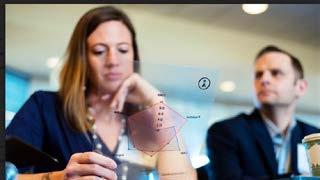
Construction Research Safety Alliance studies
GAINING INDUSTRY SUPPORT
So far, the two-year-old safety research alliance has signed up 52 sponsors, with each committing $15,000 to fund its research. Among them are construction companies such as J.E. Dunn, Kiewit and Quanta Services. How such a scientific method will fit with other approaches is not yet clear.
Construction safety research has numerous supporters. They include studies conducted or funded by the federal National Institute of Occupational Safety & Health, CPWRthe Center for Construction Research & Training and the industry-funded Construction Industry Institute, plus other industry groups and university scholars. The alliance claims on its website that it is the “only industry-funded research
Matthew Hallowell, executive director and professor of engineering, University of Colorado-Boulder

The alliance study , called “The Statistical Invalidity of TRIR as a Measure of Safety Performance,” is based on analysis of 3.6 trillion work hours of TRIR data and was unequivocal: “The analysis revealed that in nearly every practical circumstance, it is statistically invalid to use TRIR to compare companies, business units, projects or teams,” the authors revealed.
The study also revealed that the occurrence of recordable injuries is almost entirely random and that “no discernible association exists between TRIR and fatalities.”
21
Matthew Hallowell, Construction Safety Research Alliance executive director, previews safety research studies at a University of Colorado-Boulder conference.
will help create “a totally different way of thinking about safety measurement.”
Workers’ Rights When It Comes to Chemical Hazards at Work
10.30.2022 |Weeklysafety.com
HCS stands for Hazard Communication Standard , which is the OSHA standard with the goal to ensure employers and workers know about chemical hazards in the workplace and how to protect themselves.
IMPORTANT! OSHA Standard 1926.59 The requirements applicable to construction work under this section are identical to those set forth at 1910.1200. All 1910 General Industry standards referenced in this article are also applicable to the construction industry.
OSHA’s Hazard Communication Standard is important because it enforces the idea that workers have the right to know about:
1. What chemicals are in the areas you will be working in?
2. What are the hazards of those chemicals?
3. How do you protect yourself from those hazards?
OSHA Standards 1910.1200 The purpose of this section is to ensure that the hazards of all chemicals produced or imported are classified, and that information concerning the classified hazards is transmitted to employers and employees. The requirements of this section are intended to be consistent with the provisions of the United Nations Globally Harmonized System of Classification and Labelling of Chemicals (GHS), Revision 3. The transmittal of information is to be accomplished by means of
comprehensive hazard communication programs, which are to include container labeling and other forms of warning, safety data sheets and employee training.
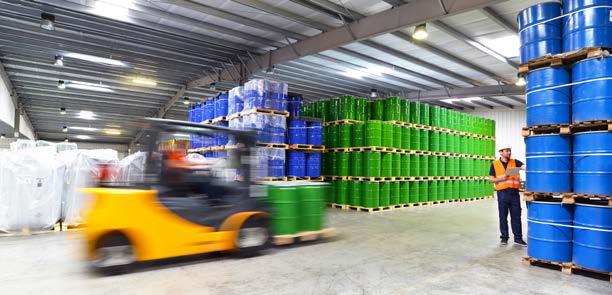
Workers have a right to know what chemicals are in their workplace, especially if they have to use them as a part of their job. The Hazard Communication Standard requires that chemical manufacturers and importers must develop a Safety Data Sheet or SDS for each chemical they produce or import. Safety Data Sheets contain valuable information about the hazards of specific chemicals and an SDS must be kept on hand for each chemical at the job site.

OSHA Standard 1910.1200(g)(8) The employer shall maintain in the workplace copies of the required safety data sheets for each hazardous chemical, and shall ensure that they are readily accessible during each work shift to employees when they are in their work area(s). Workers should be familiar with the potential hazards of any chemical they use at work. It is important that all chemicals be labeled properly.
SAMPLE OSHA & GHS LABEL
OSHA Standard 1910.1200(f)(6) Workplace labeling. …the employer shall ensure that each container of hazardous chemicals in the workplace is labeled, tagged or marked… Chemicals that are not properly labeled, or that have
damaged labels, should never be used and these chemicals should be reported to the manager or supervisor immediately.
Containers that are not labeled and/or are stored improperly creates a serious hazard for any individual who tries to use the chemicals. It also creates a risk as these chemicals could react if they make contact or spill.
OSHA Standard 1910.1200(h) Employee information and training. Employers shall provide employees with effective information and training on hazardous chemicals in their work area at the time of their initial assignment, and whenever a new chemical hazard the employees have not previously been trained about is introduced into their work area.
Pfizer MAP Project | QA/QC Training Using Procore

23
Left to Right - Sherdric “Tray” Grant, Nithesh Subramanyam, Joel Blackburn





















 | EHS Today, David Sparkman
| EHS Today, David Sparkman







